Keeping chickens as a family project can be a fulfilling experience, especially if it produces your own supply of fresh, tasty eggs and meat.
As a result, the idea of keeping chickens in your garden has become increasingly popular.
If you live in Hawaii and are considering setting up a backyard chicken coop, you should carefully consider not only the selection of hens that lay a lot of eggs but also the choice of breeds of hens that can live in hot weather.
Another consideration is the local legal regulations pertaining to raising chickens.
Your concerns and questions will be addressed in this article. Read on, and we’ll help you find hens that can withstand the heat and lay lots of eggs without breaking any rules.
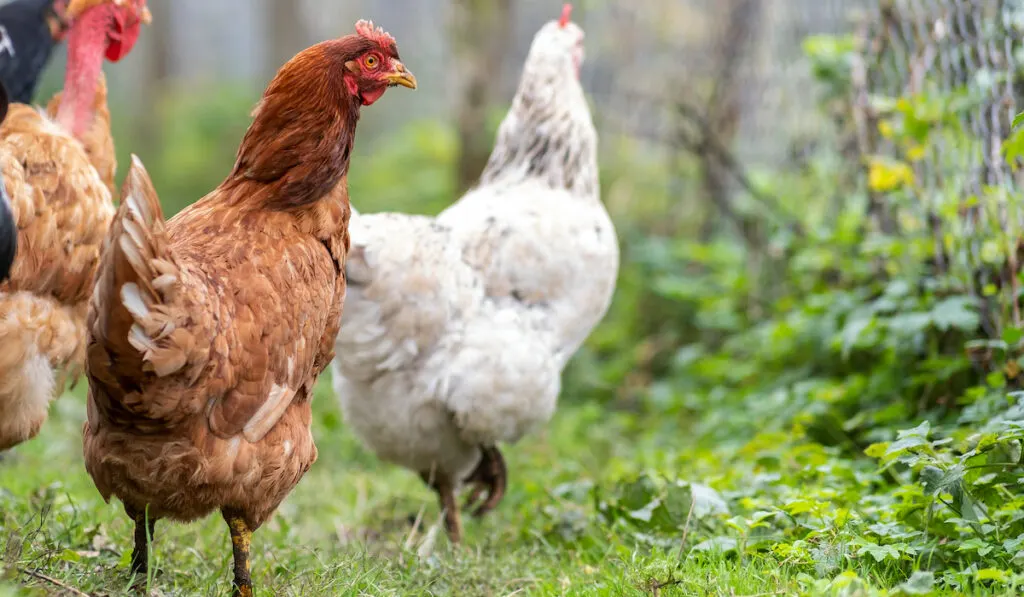
Table of Contents
Where in Hawaii Can You Legally Raise Chickens?
Many Hawaii neighborhoods welcome backyard chickens: however, zoning laws vary from community to community. You should always check with the appropriate authorities to learn of any limitations.
The local government determines the maximum allowed number of hens in a given area. There may also be noise restrictions in places that prohibit roosters, even if they are lawful statewide in Hawaii.
Always check the most recent laws and restrictions before deciding to raise hens in your Hawaiian backyard, as they are subject to change.
Legal Specifics Regarding Locations Where Chickens Can Be Kept
| County | How Many Birds Are Allowed? | Roosters | More Information |
| East Honolulu | 2 | Yes | Honolulu ordinances |
| Honolulu | 2 | Yes | Honolulu ordinances |
| Kailua | 2 | Yes | Honolulu ordinances |
| Ewa Gentry | 2 | Yes | Honolulu ordinances |
| Hilo | No limits | No limits | Hawaii County Zoning Department Permitted Use Tables |
| Kahului | Only non-residential properties can have chickens, although the number is unspecified. | Only non-residential properties can have chickens, although the number is unspecified. | Maui County Code |
| Kaneohe | 2 | Yes | Honolulu ordinances |
| Mililani | 2 | Yes | Honolulu ordinances |
| Pearl City | 2 | Yes | Honolulu ordinances |
| Waipahu | 2 | Yes | Honolulu ordinances |
Keeping in mind all the above information, there are still some crucial details you must remember when planning your hen farm:
- You should always check with the Hawaii County Planning Department to ensure that chicken raising is permitted in your area and that no zoning changes have been or will be made.
- Because of noise restrictions, roosters may be banned from some neighborhoods. For more information, check the applicable local regulations.
- Your location may also have a minimum distance requirement for coop placement and coop upkeep.
- The chickens’ living arrangements (inside/free run/mix of both) will also depend on your region.
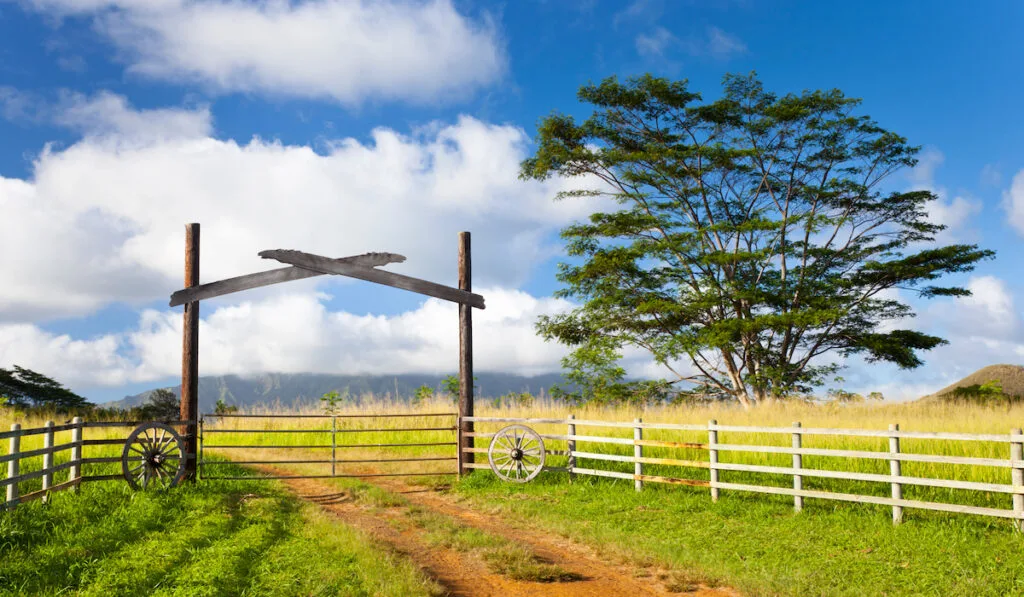
Climate of Hawaii
| Summer High | Around 85°F |
| Winter Low | Around 65°F |
The climate in the Hawaiian Islands is remarkably stable, with only modest seasonal temperature swings. The near-shore waters of the Hawaiian Islands maintain pleasant temperatures throughout the entire year.
There are only two distinct seasons of the year in Hawaii: the summer, which lasts from May to October, and the winter, which lasts from November to April.
At sea level, summer daylight temperatures average 85°F, while winter daytime temperatures average 78°F. Nighttime lows are about 10 degrees Fahrenheit cooler than their daytime counterparts.
List of the Best Chickens for Laying Eggs in Hawaii
| Leghorn | Lays about 280–320 eggs each year. Great forager. Not recommended for beginners or kids. Noisy. Flighty. |
| Minorca | Lays about 120-220 eggs each year. Dual-purpose breed. It thrives in hot climates. Good for kids and new chicken keepers. Robust and requires little care. |
| Plymouth Rock | Lays about 200–300 eggs each year. Dual-purpose breed. Ideal for novice chicken keepers and younger kids. Hardy and requires little care. |
| Australorp | Lays about 250-300 eggs each year. Dual-purpose breed. Easy to handle and docile, perfect for beginners. Hardy. |
| Ameraucana | Lays about 200 eggs each year. Beautiful pale blue eggs. Easy to handle and docile. Perfect for beginners and kids. Great forager. |
| Rhode Island Red | Lays about 150-250 eggs each year. Dual-purpose breed. Hardy and low maintenance. |
1. Leghorn
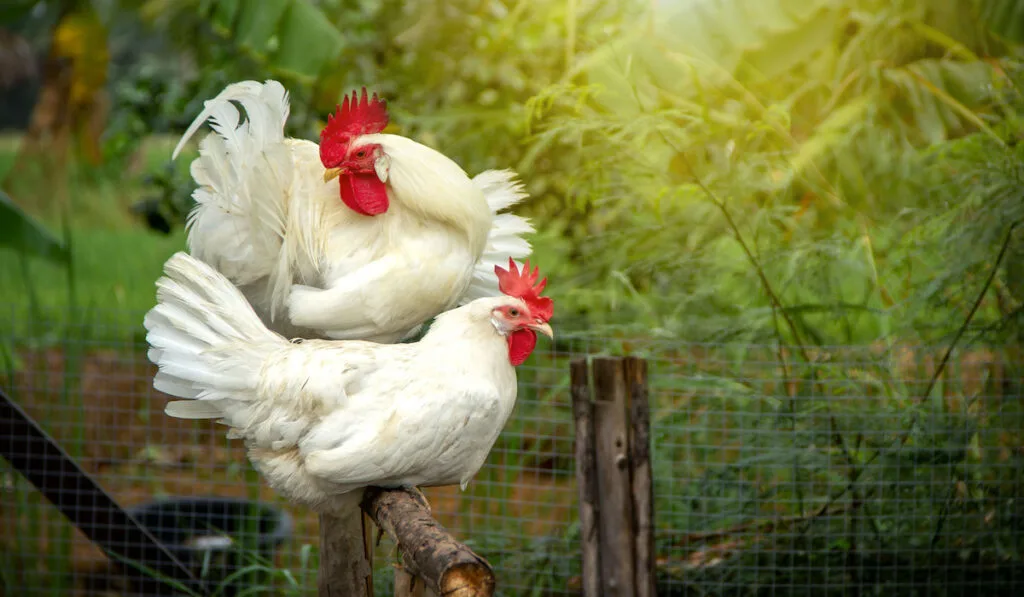
The Leghorn chicken is well-known for its adaptability to high temperatures due to its birthplace being a particularly sunny region of Italy.
When compared to other poultry species, Leghorn hens start laying eggs at a relatively young age (around four months).
They can lay anywhere from 280 to 320 eggs annually. Each hen lays an average of 5 eggs every week.
Leghorns are a tough breed that can forage effectively.
However, keep in mind that they tend to be loud and flighty. Also, Leghorns are not the ideal option for beginners or families with young children.
2. Minorca
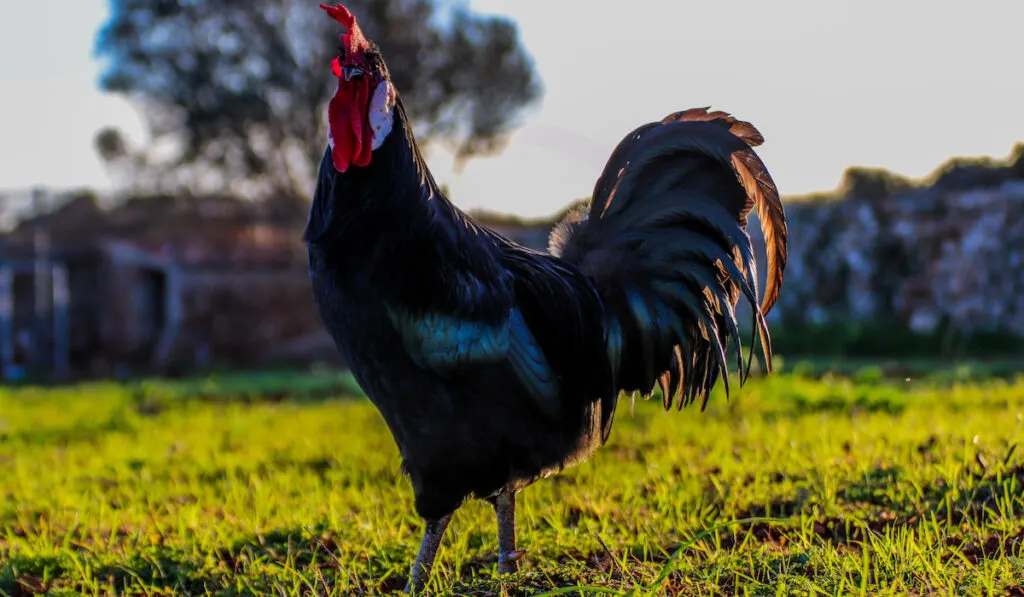
The Minorca is another chicken breed with Mediterranean roots that does well in very warm areas.
With their reputation for prolific egg laying and low care requirements, Minorca hens could be a good fit for your Hawaii coop.
On average, a hen will produce 120 eggs per year, but in warmer climates, that number can rise to 220.
As an added bonus, Minorcas start laying between 25 and 26 weeks of age, which is earlier than most other breeds.
They are friendly, docile birds who thrive in human company. The Minorca chicken is a great choice for new chicken breeders and makes a wonderful pet for young children.
3. Plymouth Rock
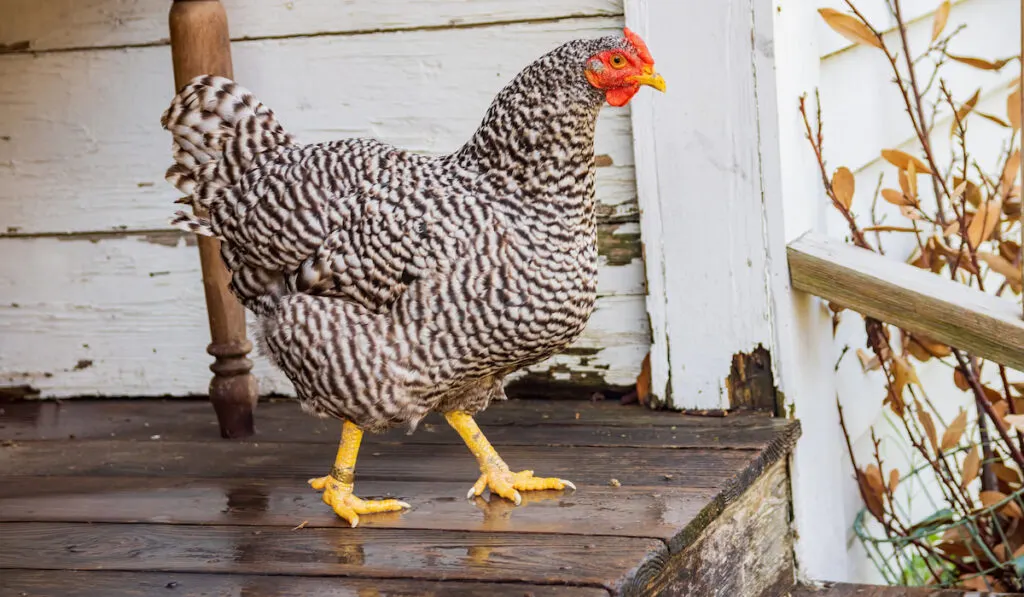
Plymouth Rocks are valuable because they can be used for both egg-laying and meat production.
The Plymouth Rock is a big bird, with roosters weighing an average of 9.5 pounds.
Plymouth hens are well known for their large, brown eggs. They lay 200 eggs on average every year or around 4 eggs per week. They also make excellent moms if they get broody.
The Plymouth Rock is one of the healthiest and most hardy birds to grow in any kind of climate.
Plymouth Rocks are not only the cutest but also the most obedient of all poultry breeds. They are perfect for households with kids of varied ages or for adults who have never kept chickens before.
4. Australorp
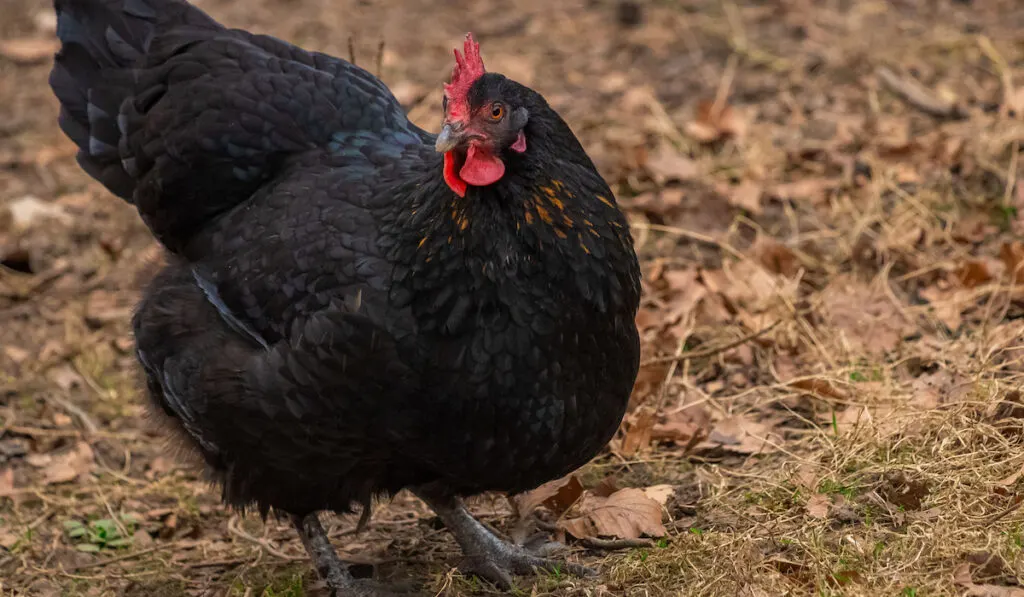
Originating in scorching Australia, the Australorp is a hardy bird. These chickens do exceptionally well in both hot and cold climates and enjoy being free to roam.
The Australorp is a fast-maturing breed capable of producing eggs between the ages of 20 and 22 weeks. In addition, a single hen can lay anywhere from 200 to 250 medium-sized eggs annually.
They are big birds. The average adult rooster weighs around 8.5 pounds, while a hen weighs about 6.5 pounds, making them ideal for meat production.
The Australorp has a reputation for being a gentle chicken. This breed gets along well with kids and other animals on the farm.
Due to their friendly demeanor and minimal maintenance needs, these hens are perfect for first-time chicken keepers and families with young children.
5. Ameraucana
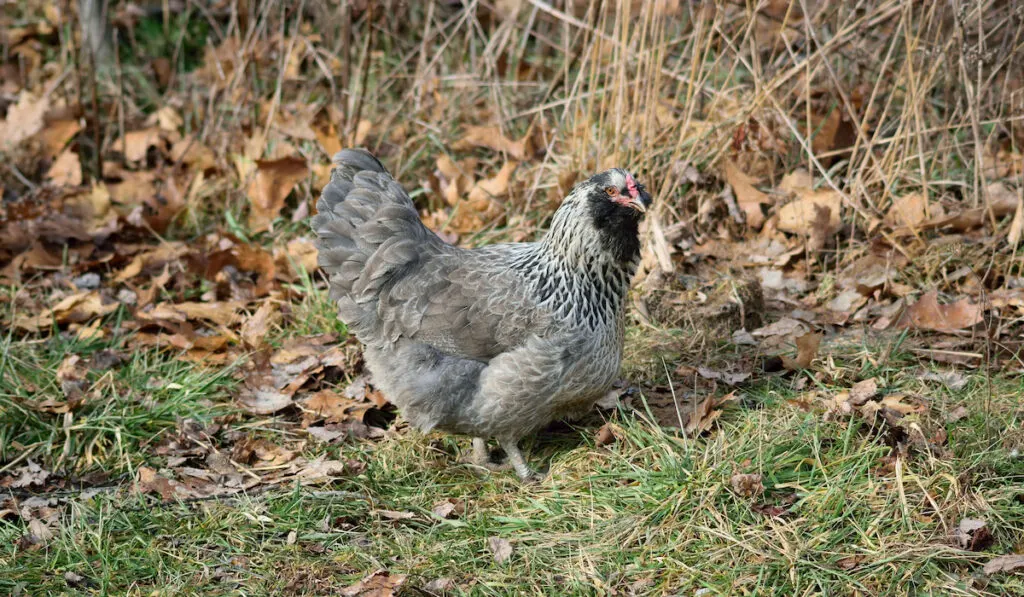
The distinctive pastel blue eggs laid by Ameraucana hens are characteristic of this breed.
However, Ameraucanas are known for being slow to lay eggs, as they may not begin producing eggs until they are 6 months old.
Ameraucana hens may lay fewer eggs per year than other breeds, but you can still count on a steady supply. Under the right conditions, an Ameraucana hen can lay approximately 200 eggs annually.
The Ameraucana is one of the calmest, friendliest, and most docile breeds of chicken around. They are kind to children and other animals and like the freedom of the outdoors.
6. Rhode Island Red
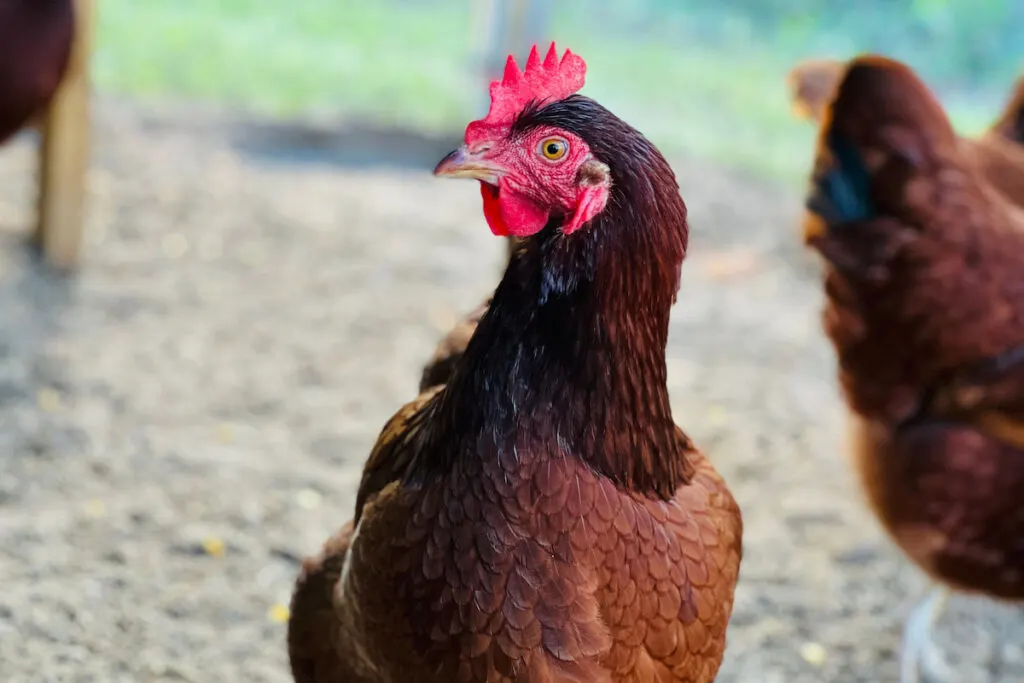
The Rhode Island Red hen’s practicality, beauty, and amiable nature make her a welcome addition to any flock.
These chickens are a resilient breed that can lay an abundance of eggs and, thanks to their larger size, may also be used as a meat source.
The typical age at which the Rhode Island Red hens begin laying eggs is 18 weeks, but it can begin as early as 16 weeks. They are consistent layers, with the average hen laying between 200 and 300 eggs a year.
Rhode Island Red hens are friendly and welcoming companions who are easy with people and other animals. However, roosters have been known for being aggressive and territorial.
Final Thoughts
The ideal Hawaiian chicken breed would be one that would thrive in the warm climate, be easy to care for, lay a sufficient number of eggs, and serve as a source of meat as well.
Yet, selecting the best chicken for breeding is highly dependent on your own personal preferences as well as the features of the breeding setting that you can provide for the chickens.
Additionally, the idea of keeping chickens as pets is appealing to many people. Remember that a friendly breed is just the beginning for pet hens; what matters most is how much love and attention you can give them.
So, prepare in advance for what you hope to achieve with your chicken flock, and then use this guide as a resource in making your final choice.
Resources
- https://www.omlet.us/guide/chickens/laws_about_keeping_chickens/hawaii_idaho_illinois/
- https://chickenlaws.com/hawaii/
- https://www.honolulu.gov/rep/site/csd/Feral_Chicken_Info_Sheet.pdf
- https://chickenlaws.com/hawaii/honolulu-chicken-laws/
- https://www.mauicounty.gov/ArchiveCenter/ViewFile/ArchivedItem/6465
- https://www.homesteadinhawaii.com/best-chicken-breeds-for-hawaii/?utm_content=cmp-true
- https://thegardeningdad.com/best-chicken-breeds-for-hawaii/
- https://www.gohawaii.com/trip-planning/weather
- https://thegardeningdad.com/best-chicken-breeds-for-hawaii/
- https://www.homesteadinhawaii.com/best-chicken-breeds-for-hawaii/?utm_content=cmp-true
- https://www.thehappychickencoop.com/minorca-chicken/
- https://www.roysfarm.com/minorca-chicken/
- https://www.chickensandmore.com/leghorn-chicken/
- https://breeds.okstate.edu/poultry/chickens/leghorn-chickens.html?Forwarded=afs.okstate.edu/breeds/poultry/chickens/leghorn
- https://www.heritageacresmarket.com/plymouth-rock-chicken/
- https://www.chickensandmore.com/rhode-island-red/
- https://www.somerzby.com.au/blog/rhode-island-red-chickens/
- https://www.heritageacresmarket.com/black-australorp/
- https://www.somerzby.com.au/blog/australorp-chickens/
- https://milefour.com/blogs/learn/ameraucana-chicken#6
